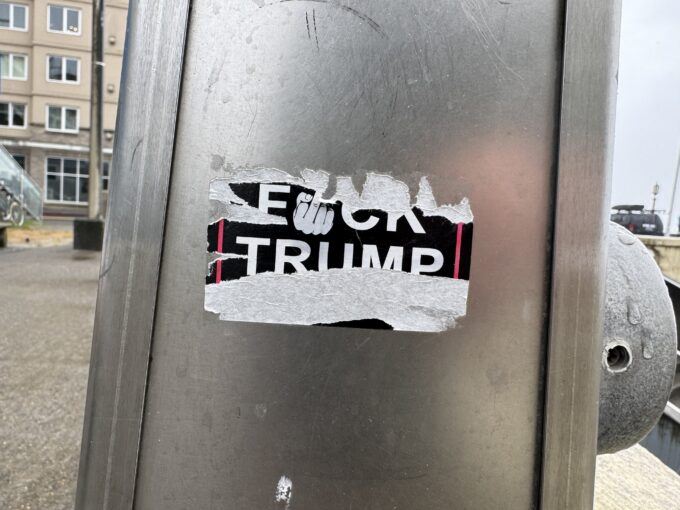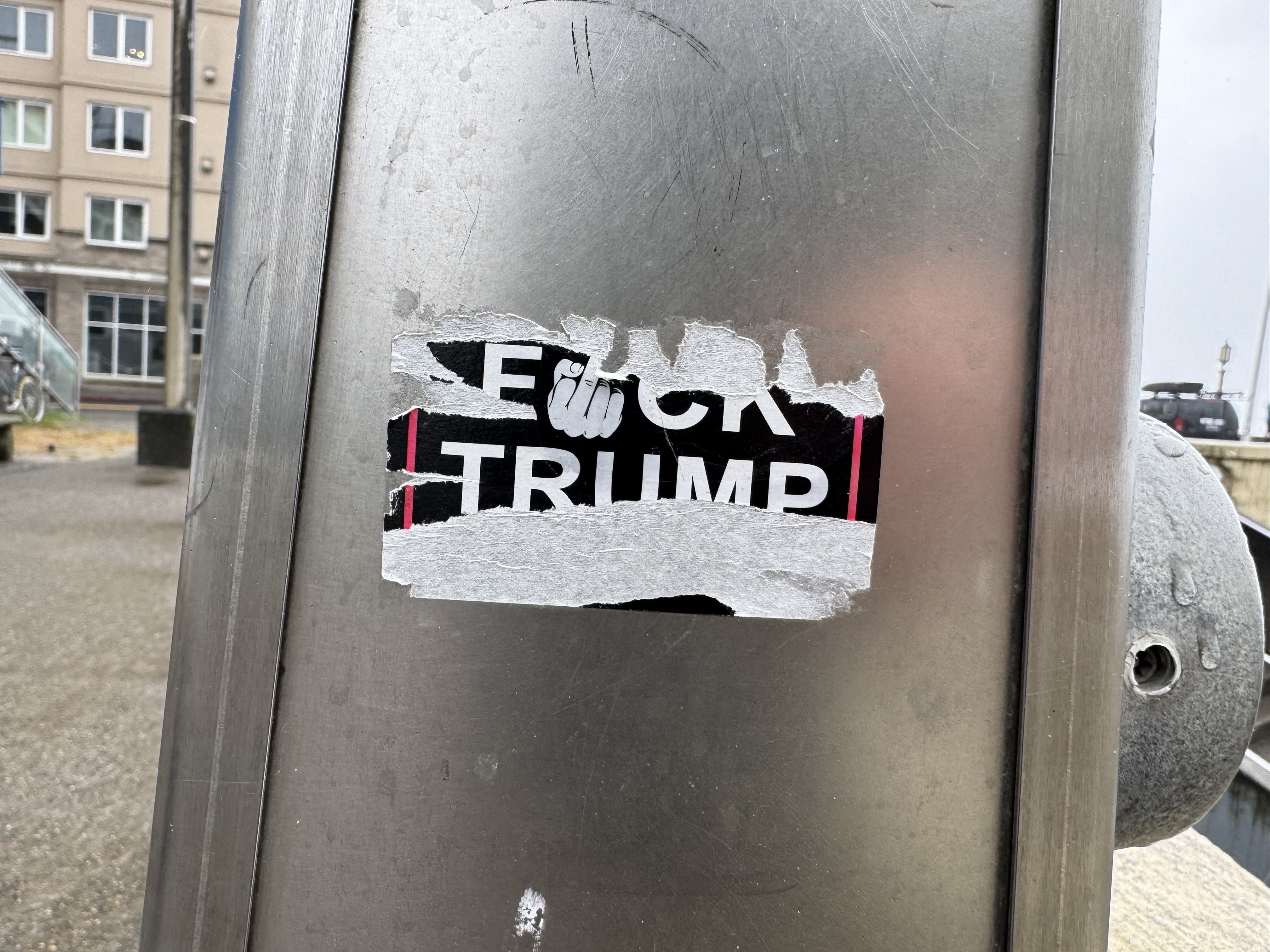
Photograph by Nathaniel St. Clair
It is always dangerous to try to get into Donald Trump’s head, and there probably is not much point to the exercise, but Trump says the purpose of his tariffs is to bring down the trade deficit and move to balanced trade. Tariffs can certainly reduce imports, and it is plausible that the tariffs he has put in place will raise import prices enough to bring us somewhere close to balanced trade. It is not clear how this would benefit the United States, but it is worth taking a closer look at the story.
First, it is important to get a general picture of the trade deficit over the last three decades.

As can be seen, trade was close to balance coming out of the 1990-91 recession, with the deficit hitting just 0.3 percent of GDP at the start of 1992. It rose modestly in mid-1990s as the economy recovered from the recession but then grew far more rapidly in the late 1990s.
This was due to three factors. First, we had a rapidly growing economy driven by the Internet bubble, which pulled in a huge quantity of imports.
Second, Treasury Secretary Robert Rubin had an explicit “high dollar” policy. This made our exports more expensive to people living in other countries and imports cheaper for people living in the United States. Less competitive exports, combined with cheaper imports, means the trade deficit will rise.
The third factor was the East Asian financial crisis. In 1997, there was a run on the assets of the countries of East Asia, which had been experiencing a boom earlier in the decade. In a policy dictated by the Clinton Treasury Department, the I.M.F. offered loans to these countries, but it was conditioning on letting their currencies plunge in value. The idea was that they would export enough to pay back the loans, and many of the exports went to the United States.
There was a further run-up in the trade deficit following the end of the 2001 recession. This was driven largely by an explosion of Chinese exports to the United States. The trade deficit eventually peaked at more than 6.0 percent of GDP in the fourth quarter of 2005.
What happened next is underappreciated, certainly by Donald Trump, but also many more knowledgeable people. The trade deficit fell sharply. Part of that story was the recession following the collapse of the housing bubble in 2008-2009.
But even as we recovered from the recession, the deficit never came anywhere close to prior peaks. It settled near 3.0 percent of GDP, roughly half of its peak in 2005. The drop was due to a huge decline in the value of the dollar against other currencies, as well as a big increase in US oil and gas production that sent imports of these fuels tumbling.
This means we got halfway to balanced trade from 2005 to 2013. The impact of this reduction in our trade deficit of 3.0 percentage points of GDP should look similar to what we can expect from Trump’s move to balanced trade by imposing high tariffs.
If anyone thought this plunge in the trade deficit meant a boom in manufacturing employment, they would be badly mistaken. Manufacturing employment was still over 14 million in 2005 when the trade deficit was peaking. It stood at just over 12 million in 2013. It has risen modestly over the last dozen years as the trade deficit stabilized, but the growth could hardly be called a boom.
We may expect some further increases in manufacturing employment if we move close to balanced trade, and can avoid a recession, but most likely any increase would be in the hundreds of thousands, like the rise since 2013. That is not a very big deal in an economy with more than 160 million workers.
There are a few other points that can be made about Trump’s trade policies. If most of the story is reducing imports by roughly a third, as several analysts have estimated, then two or three years out we will be importing around $2 trillion a year in goods, rather than the current $3.3 trillion.
This decline in imports will mean that our market is far less important to foreign countries than it is today. While countries like South Korea, Japan, and Canada would suffer serious economic hardship from an abrupt loss of the US market today — just as a manufacturer would suffer harm from losing a major customer — that will not be especially true after they adjust to the Trump tariff regime.
Not only would their exports to the US be a much less important share of their market, they would all know that the United States could not be counted on as a reliable trading partner. This means that most businesses and countries will have taken precautions against the possibility that Trump, or a possible MAGA successor, could in a fit of anger new impose barriers to their exports.
They might still be willing to give Trump a gold coin, like Apple CEO Tim Cook, but they would no longer be willing to make real concessions. Trump’s tariff game-playing is a one and done deal. Other countries will not allow their prosperity to depend on the whims of an old man who is out of touch with reality.
There is also another side to trade that Trump doesn’t seem to know about. Almost 40 percent of our exports at the end of last year were services, and these exports had been growing far more rapidly than our exports of goods. These are items like foreign travel in the US, which includes student tuition (19.3 percent of service exports), financial services (16.2 percent of service exports), and payments for intellectual property (13.6 percent of service exports).
It is a safe bet that our exports in all of these categories will be falling sharply as a result of the Trump administration’s actions. We are already seeing a sharp decline in foreign tourism. Apparently not many people are anxious to vacation in a country that claims the right to detain and hold them indefinitely, for no reason whatsoever.
Foreign spending on US financial services is also likely to plummet as they cut their ties to the US market and develop alternative payment mechanisms. This is especially likely given the Trump administration turning a blind eye to corruption and promoting bloat in our financial sector with its ridiculous embrace of crypto.
And foreign payments for intellectual property will be dropping as we cut research funding and chase the people who do the research out of the country. Donald Trump may not understand the impact of his policies in these areas, but other countries that are reaching out to US scientists do.
The basic story here is that we may see a reduction in our trade deficit. We will pay more money for inferior American products. We will see a modest increase in manufacturing jobs, most of which will be no better than the jobs these workers would have held otherwise. And we will have gutted dynamic sectors of our economy, like biomedical research and clean energy.
That may be MAGA, but it doesn’t sound very great.
The post The Impact of Trump Tariffs on the Trade Deficit appeared first on CounterPunch.org.



